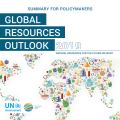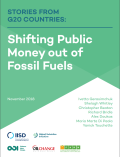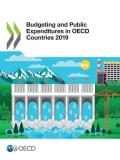
The Global Resources Outlook analyses the demographic and socioeconomic forces driving the extraction and use of natural resources globally and reports on how these drivers and pressures have determined our current state. It assesses the environmental and well-being impacts, and considers the distribution and intensity of the environmental and human health impacts resulting from the changing state of our environment. Finally, it recommends a set of appropriate policy responses.

While the Group of 20 (G20) governments continue to subsidize and support the production and consumption of fossil-fuel-based electricity, some G20 governments have made progress in shifting at least some support away from fossil fuels and increasing taxation of fossil fuels. This working paper brings together examples illustrating how reforms can be enabled and implemented to align the flows of public money with the Paris Agreement and Sustainable Development Goals (SDGs).

This report provides a comprehensive view of practices and developments in the governance, implementation and performance of budgeting across OECD countries. It looks at recent practices such as the application of medium-term frameworks and the use of data and analytics to highlight the impacts of policies on concerns such as gender equality and the environment.
This report, Fiscal Policies for Development and Climate Action, a World Bank report developed in collaboration with UNIDO, informs the dialogue on the evolving role of macro-fiscal management in the context of a changing climate and warming world. The report also aims to better equip finance ministries in developing countries with the tools to understand, appraise, and implement Environmental Tax Reform (ETR) policies and climate change adaptation and risk-management strategies.
This report, Social Impact Investment 2019: The impact imperative for sustainable development , depicts the state-of-play of social impact investment approaches globally and compares regional trends and assesses prospects for future growth with a special focus on data issues and recent policy developments. It provides new guidance for policy-markers and development finance providers to maximise the contribution of impact investing to the 2030 Agenda, the Pris Agreement and the Ababa Action Agenda.
